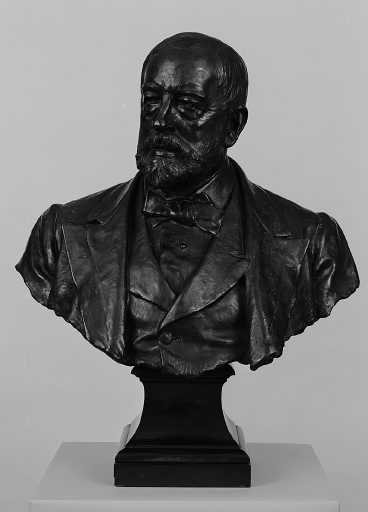Dear Henry Tate,
The word ‘museum’ can often trigger thoughts about preserving, ordering and labelling the past – along with all its well-known sedative side-effects of defusing the original power of an artwork. In the encyclopedic universe of a museum, contemporary art – with its ambition to open up new perspectives on the world – might, in the worst case, just end being filed away with the art of yesterday.
However, looking at your bust portrait that was on display in the Turbine Hall during Head to Head, we were made aware, once again, of how simply, yet powerfully, Tate can create a convincing blend of old and new. Besides being placed in the same space as video portraits by Gilbert & George and Absalon, as well as other bronze portraits by Rodin and Giacometti, a new image was made as the mix of visitors circulated among all those (well-ordered) busts.
In his conversation with Lynne Cooke, Rem Koolhaas talks of a ‘blurring’ or a “leaking from one area to another, which should lead to discoveries” within expanded historic time frames. It is a very important topic that lies at the centre of interest of the artists and writers in this issue of Tate Etc. And similarly, Thomas Hirschhorn’s recent project – the Musée Précaire Albinet – showed how the familiar can be reinvigorated when he borrowed artworks from the Pompidou Centre collection for his popular makeshift museum in the Paris suburbs. Hirschhorn, like you, believes in art that can shape the world. So, we hope that you get a sense of this sentiment within the pages of this, and future issues.
With best wishes,
Bice Curiger and Simon Grant


